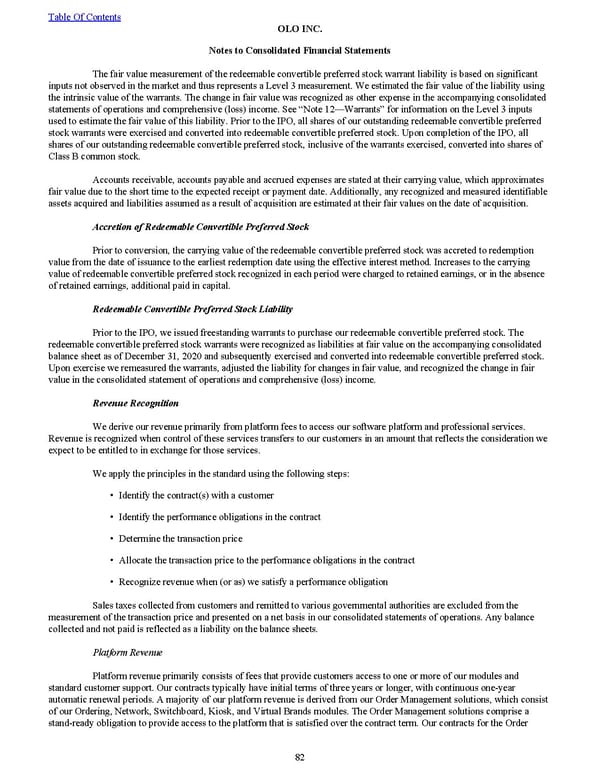The fair value measurement of the redeemable convertible preferred stock warrant liability is based on significant inputs not observed in the market and thus represents a Level 3 measurement. We estimated the fair value of the liability using the intrinsic value of the warrants. The change in fair value was recognized as other expense in the accompanying consolidated statements of operations and comprehensive (loss) income. See “Note 12 — Warrants” for information on the Level 3 inputs used to estimate the fair value of this liability. Prior to the IPO, all shares of our outstanding redeemable convertible preferred stock warrants were exercised and converted into redeemable convertible preferred stock. Upon completion of the IPO, all shares of our outstanding redeemable convertible preferred stock, inclusive of the warrants exercised, converted into shares of Class B common stock. Accounts receivable, accounts payable and accrued expenses are stated at their carrying value, which approximates fair value due to the short time to the expected receipt or payment date. Additionally, any recognized and measured identifiable assets acquired and liabilities assumed as a result of acquisition are estimated at their fair values on the date of acquisition. Accretion of Redeemable Convertible Preferred Stock Prior to conversion, t he carrying value of the redeemable convertible preferred stock was accreted to redemption value from the date of issuance to the earliest redemption date using the effective interest method. Increases to the carrying value of redeemable convertible preferred stock recognized in each period were charged to retained earnings, or in the absence of retained earnings, additional paid in capital. Redeemable Convertible Preferred Stock Liability Prior to the IPO, we issued freestanding warrants to purchase our redeemable convertible preferred stock. The redeemable convertible preferred stock warrants were recognized as liabilities at fair value on the accompanying consolidated balance sheet as of December 31, 2020 and subsequently exercised and converted into redeemable convertible preferred stock. Upon exercise we remeasured the warrants, adjusted the liability for changes in fair value, and recognized the change in fair value in the consolidated statement of operations and comprehensive (loss) income. Revenue Recognition We derive our revenue primarily from platform fees to access our software platform and professional services. Revenue is recognized when control of these services transfers to our customers in an amount that reflects the consideration we expect to be entitled to in exchange for those services. We apply the principles in the standard using the following steps: • Identify the contract(s) with a customer • Identify the performance obligations in the contract • Determine the transaction price • Allocate the transaction price to the performance obligations in the contract • Recognize revenue when (or as) we satisfy a performance obligation Sales taxes collected from customers and remitted to various governmental authorities are excluded from the measurement of the transaction price and presented on a net basis in our consolidated statements of operations. Any balance collected and not paid is reflected as a liability on the balance sheets. Platform Revenue Platform revenue primarily consists of fees that provide customers access to one or more of our modules and standard customer support. Our contracts typically have initial terms of three years or longer, with continuous one-year automatic renewal periods. A majority of our platform revenue is derived from our Order Management solutions, which consist of our Ordering, Network, Switchboard, Kiosk, and Virtual Brands modules. The Order Management solutions comprise a stand-ready obligation to provide access to the platform that is satisfied over the contract term. Our contracts for the Order Table Of Contents OLO INC. Notes to Consolidated Financial Statements 82
 2022 10K Page 88 Page 90
2022 10K Page 88 Page 90